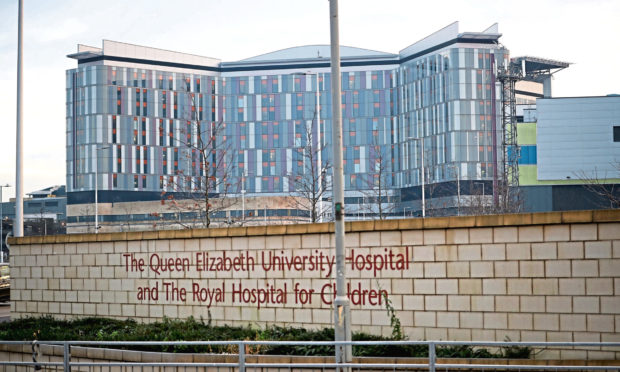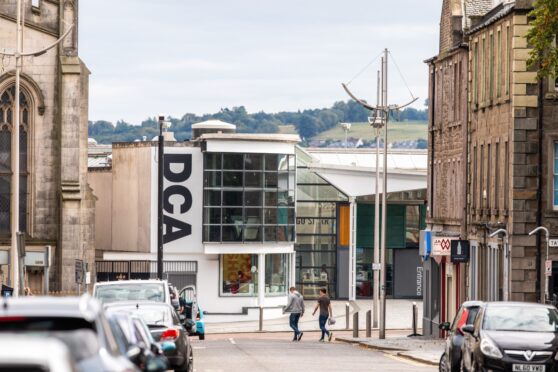Aberdeen and Dundee both need £1 billion to bring NHS buildings up to standard. Hospitals are becoming health hazards.
A similar story applies to the new Glasgow super hospital, where cheap building and bad design conspire to kill. Two children are dead from sources traced to the water supply.
In the capital, a new hospital for children is long-delayed and in dispute between the builders and the Scottish Government.
Any one of these could be taken as misfortune. All of them amount to disaster.
In recent years, NHS Tayside has been in “special measures”, where the Scottish Government takes over management of a health board. Tayside is now improving but, currently, both NHS Lothian and NHS Greater Glasgow are in special measures.
Well-paid managers have failed. Naturally they have been paid off and not punished. The higher echelons of the public sector in Scotland reward failure like FTSE 100 companies. The scale of the failure and the size of the payoffs are hidden. There is little transparency when it comes to our governing class.
An independent inquiry into NHS Tayside’s disastrous mismanagement reported this week that the board appeared “more interested in protecting its reputation than looking after people”.
This is a shocking indictment of those we trust to run a vital service.
In today’s budget, the Scottish Government will argue that either the Union, the Tories or a lack of money are to blame for Scotland not being great. The evidence suggests none are a legitimate cause of the failure.
Per capita spend in Scotland is more than £11,000 per person. In the South East of England, excluding London, it’s £8,601. We have roughly 20% more cash to spend than the folk of Kent.
In both Scotland and the South East, hospitals are under pressure, and boards are in special measures. Scotland achieves the same outcome, but on a lot more money.
If the NHS creaks in the lowest area of per capita spend and in the second highest, then that suggests that spending alone is not the issue.
Further, the South East does not blame the Union, and certainly not Boris. It is solid Tory blue.
The Scottish budget has lost £1.5 billion through UK Government cuts since 2010 and the banking crisis, according to official figures. The British Medical Association says NHS Scotland needs at least an extra £3bn per year to improve. What Scotland has lost from Westminster is dwarfed by what Scotland needs.
A truer analysis is that Scotland has relatively favourable spending but a governing structure in denial about its effectiveness. And a political culture unable to think beyond tribal chants.
If it’s money alone that’s needed to fix Scotland, the bill is going to be astronomical. The NHS needs £3bn more, the police are saying 750 officers will be cut if they don’t get more, and Larry Flanagan at the Educational Institute of Scotland claims there’s nothing wrong with the education standards that extra spending wouldn’t fix.
Which suggests Scotland needs £4- £5bn more to spend.
Derek Mackay (prior to his shock resignation) said independence is the solution to our spending woes.
Yet the SNP admits there is already a deficit between revenue and income.
They appear to be saying it’s even larger than previously thought, if Scotland is to spend what it needs.
So far, the Scottish Government has been cautious about raising or changing tax structures. When they have used tax powers, the money raised has been well below expectation. Against taxing wealth and/or land, they appear to say that more is needed, but it won’t be found in Scotland.
Worse, the Scottish Government has maxed out on new borrowing powers and has added to Scotland’s debt considerably by relying on private finance to build our dysfunctional hospitals, among other things.
Ironically, it is Boris who comes to the rescue.
The NHS Funding Bill voted on this week in Westminster has been spun as an insult to Scotland, because it’s been treated as an EVEL – English Votes for English Laws. This means only the votes of MPs for English constituencies counted. Yet the effect of the Bill would be to boost Scottish spending by as much as £4bn – Scotland’s cut of England’s increase.
Thus Holyrood will get to boost NHS spending in Scotland without having to raise taxes or reform the service. By any measure, that’s a political win. The SNP is trying to make a good story look bad to disguise two fundamental issues.
The first is that spending alone is not a magic cure to Scotland’s ills. Since the 1980s, we’ve been spending more than most of the UK but getting worse results. In health especially, our bills are high but the results notoriously woeful. We need reform, transparency and honesty as much as money.
The second is that Scotland does need more money, but there is a reluctance to admit it as it complicates the constitutional argument. Our leaders are a bit like the board of NHS Tayside – more interested in reputation than looking after the people.










